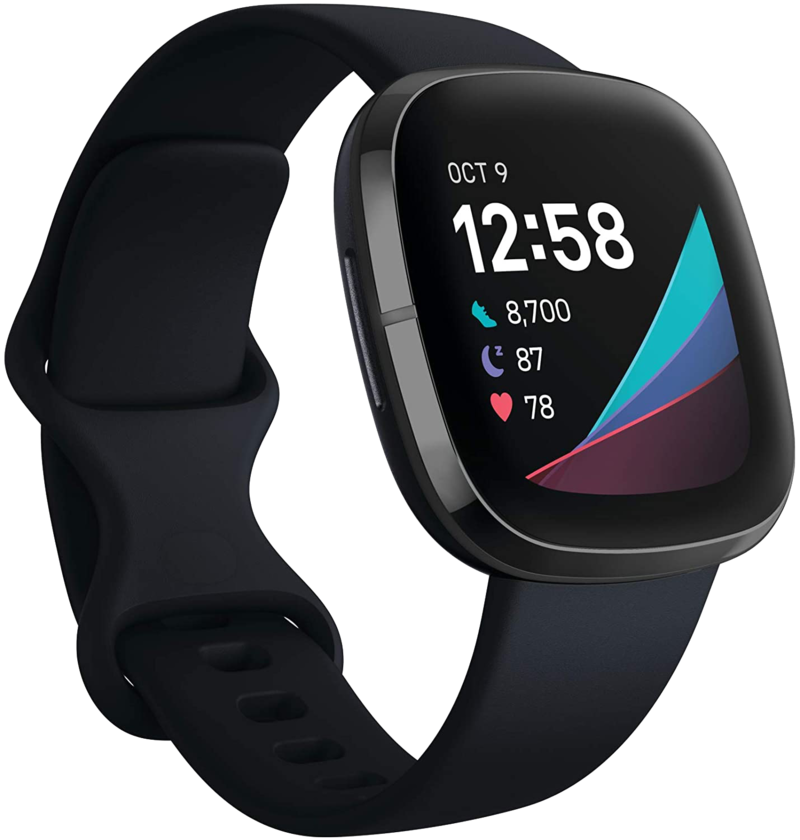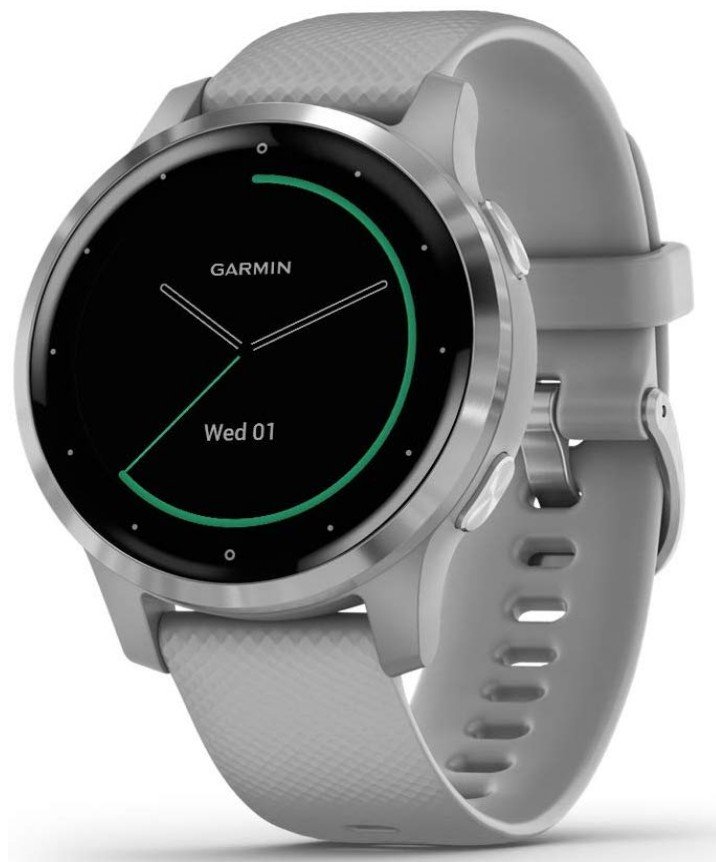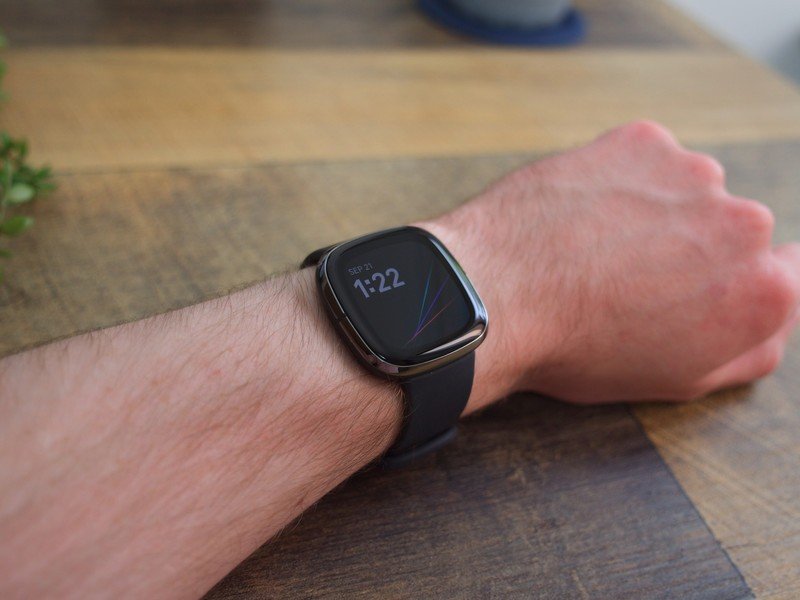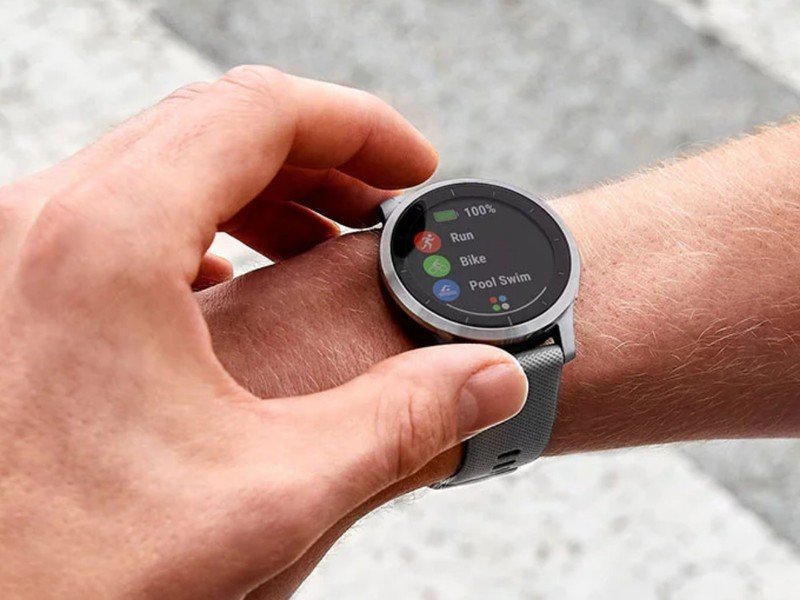Fitbit Sense vs. Garmin Vivoactive 4: Which should you buy?

Fitbit Sense

It's difficult to keep up with all the changes in the world of wearables. The Fitbit Sense is one of the newest releases and it has plenty of new perks for users to enjoy, like high-tech sensors that give you a better overview of your health, Fitbit's Active Zone Minutes, and improved heart-rate technology.
Fitbit Sense
Smartest health watch
Garmin Vivoactive 4

Garmin is constantly releasing new wearables that compete with other leaders in the industry, and the Vivoactive 4 lives up to that. You get detailed health/fitness tracking, onboard GPS, heart-rate monitoring, animated on-screen workouts, breathwork activities, and much more.
Garmin Vivoactive 4
Well-rounded wearable
Fitbit Sense vs. Garmin Vivoactive 4 A fair fight
Everyone has their own idea of what makes a smartwatch the best smartwatch, but we can all agree that improvements and upgrades play a big part. The Fitbit Sense and the Garmin Vivoactive 4 are two perfect examples of what makes a good upgrade. Both of these watches have greatly improved since their predecessors.
When it comes to choosing between the two, there are only a few differences to consider. The most important though is if can you live without advanced health sensors that give you extra insight into your overall well-being. If you answered yes, then you'll probably end up siding with the Garmin Vivoactive 4. It takes care of your essential tracking needs and even offers a few bonus perks. The Fitbit Sense, on the other hand, offers the essential tracking, bonus perks, and advanced health sensors. If you want it all, this is the better option for you.
Fitbit Sense takes health tracking to the next level

If you're familiar with the Fitbit ecosystem, you might get the warm fuzzy feeling when you see its latest wearable. The Fitbit Sense looks a lot like the Versa 3. They're similar in a lot of ways, but the Sense brings a bit more to the table. You'll have the company's typical squircle design, but it looks and feels better due in part to its build. It's made from aluminum and stainless steel with a biosensor core. The blend of metal and glass just gives off a more refined look.
Many users had grown sick and tired of Fitbit's tricky proprietary band system. The good news is that they've addressed the issue and introduced an entirely new band system. The new Fitbit Sense bands are more comfortable and flexible. You'll appreciate the quick-release attachment that makes changing your bands a simple and quick process.
| Header Cell - Column 0 | Fitbit Sense | Garmin Vivoactive 4 |
|---|---|---|
| Dimensions | 40 x 40 x 12mm | 45.1 x 45.1 x 12.8mm 40.0 x 40.0 x 12.7mm |
| Display | 1.58" AMOLED | 1.1" or 1.3" transflective |
| Sensors | ECG, EDA, skin temperature, optical heart rate sensor, SpO2, gyroscope, 3-axis accelerometer, altimeter, ambient light sensor | HRM, accelerometer, Pulse Ox (SpO2) sensor, gyroscope, compass, barometric altimeter, ambient light sensor |
| Connectivity | Bluetooth 5.0 Wi-Fi b/g/n | Bluetooth, ANT+, Wi-Fi |
| Battery life | 6+ days | 7 to 8 days, varies by model |
| Water resistance | 5ATM+ IP68 | 5ATM |
| Colors | Carbon/Graphite, White/Gold | 45mm: Slate, Silver 40mm: Slate, Silver, Light Gold, Rose Gold |
| ECG, EDA sensors | ✔️ | ❌ |
| Onboard GPS | ✔️ | ✔️ |
| Fall/Incident detection | ✔️ | ✔️ |
| Mobile payments | ✔️ | ✔️ |
Before we dive into the new stuff, you'll be happy to know that you'll still have the typical Fitbit features that make their wearables so great to use. Some examples include 24/7 heart-rate monitoring, sleep tracking, over 20 goal-based exercise modes, automatic workout recognition, female health-tracking, Fitbit Pay, and Amazon Alexa. Fitbit is also adding Google Assistant to the list of perks. You'll find either voice assistant is easy to use thanks to the built-in microphone and speaker. You can also receive calls on your watch when your phone is connected.
Get the latest news from Android Central, your trusted companion in the world of Android
The watch can detect minor electrical changes in your skin's sweat level, which is instrumental in understanding how your body reacts to stress.
On to the new stuff. The Fitbit Sense is equipped with an electrodermal activity (EDA) sensor that measures electrodermal activity response. The watch can detect minor electrical changes in your skin's sweat level. This is instrumental in understanding how your body reacts to stress. You'll also get a Stress Management Score in the Fitbit app, along with suggestions for how to better manage your stress, like with breathing exercises.
The Fitbit Sense also has the company's latest PurePulse 2.0 technology with a new multi-path heart rate sensor and updated algorithm. This advanced technology leads to another heart health feature: personalized high and low heart rate alerts. Speaking of heart rate, we should also mention the new Active Zone Minutes feature. This is a relatively new addition, which lets you know when you've entered your personalized target heart rate zones during exercise. Your target heart rate zones are determined by your age and fitness level.
You'll also have a skin temperature sensor, which can detect changes that could indicate a fever, illness, or a new menstrual phase. One of the more common smartwatch features these days, the electrocardiogram (ECG) sensor, is also here. It analyzes your heart rhythm for signs of atrial fibrillation (AFib). Once you receive your reading it, you can download it and share it with your doctor. It's easy to see why the Sense is one of the best Fitbits you can buy.
The Garmin Vivoactive 4 covers just about everything

One advantage the Garmin Vivoactive 4 has over the Fitbit Sense is that it offers two size options: 40mm and 45mm. All of the models come in a stylish stainless steel case. The larger model supplies an impressive 8 days of battery life in smartwatch mode while the smaller 40mm model will give you 7 days. You'll have the quick-release attachment here as well, so it's easy to find Garmin Vivoactive 4 bands for any occasion.
When you compare the Garmin Vivoactive 4 and the Vivoactive 3, you'll notice that some big steps have been taken to improve it. You now have a Pulse Ox sensor for monitoring blood oxygen saturation levels. Another unique perk is respiration tracking, which tells you how your breathing is throughout the day. It goes well with the stress tracking feature that informs you if you're having a calm, balanced, or stressful day. Take advantage of a breathwork activity when you need to relax.
The Garmin Vivoactive 4 has Body Battery energy monitoring to help you determine when to rest and when to exercise.
The Garmin Vivoactive 4 has Body Battery energy monitoring to help you determine when to rest and when to exercise. You might think you already have this figured out, but this feature closely monitors your energy levels for you. It does this by collecting data from activity, sleep, stress, and heart rate variability (HRV). You'll have a good idea of when is the best time for rest and for workouts based on your energy levels.
You'll have access to on-screen workouts that you can follow along with. The Garmin Vivoactive 4 comes with more than 20 preloaded sports apps, including running, cycling, swimming, yoga, and more. There's also the preset workouts from Garmin Connect or you can always follow the training plans from Garmin Coach. There's certainly no shortage of options for how you want to exercise with your watch.
It wouldn't be a well-rounded experience without the essentials. The other key features on the Garmin Vivoactive 4 include onboard GPS, heart-rate monitoring, activity/sleep tracking, Garmin Pay, smartphone notifications, and music storage. It may not be quite as advanced as the Fitbit Sense, but it is definitely one of the best Garmin smartwatches on the market.
Fitbit Sense vs. Garmin Vivoactive 4 Which should you buy?
If you want a well-rounded wearable that gives you a little bit of everything, you'll want to consider the Garmin Vivoactive 4. It does lack more advanced features, like ECG, EDA, and skin temperature sensors, but it matches up to just about everything else that the Fitbit Sense offers. It's stylish, offers week-long battery life, comes in two different sizes, and has a solid health/fitness tracking suite.
However, when you're committed to monitoring every aspect of your health and fitness, you won't want to settle for less. Fortunately, the Fitbit Sense covers every little detail. It might be too expensive for what some users are willing to spend, but it's also not that much more than the Garmin Vivoactive 4. If the extra features will be useful in your health-tracking experience, the Fitbit Sense will prove to be a worthwhile investment.

Everything and more
If you're investing in a smartwatch to monitor and improve your health and well-being, the Fitbit Sense is a perfect option. The new ECG, EDA, and skin temperature sensors provide important details. You also get GPS, Active Zone Minutes, and new PurePulse 2.0 technology.

A bit of everything
Looking for solid health/fitness tracking and stellar battery life? You'll love the Garmin Vivoactive 4. It also comes with Body Battery energy monitoring, a Pulse Ox sensor, on-screen workouts, and more. It's available in two size options, so you can pick the one that suits you best.

Courtney Lynch is a freelance writer at Android Central. She's obsessed with all things health, fitness, and music. At any given time, she can be found checking out the latest and greatest gadgets while simultaneously petting her dog and sipping iced coffee.
